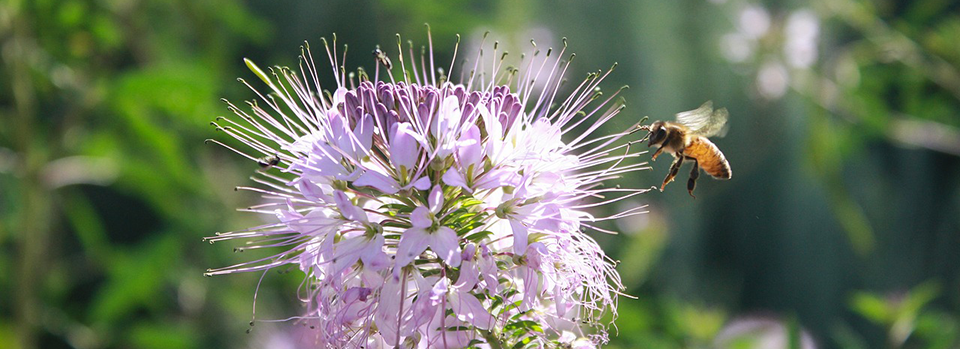
K-State horticulture expert Cynthia Domenghini says Bee Balm attracts bees, hummingbirds and butterflies.
How to incorporate native plants in the garden
K-State horticulture expert says native plants promote biodiversity
At a glance: Native plants can restore biodiversity to a home garden or other area, says K-State horticulture expert Cynthia Domenghini. Some plants to consider for a landscape include Bee Balm, Witch Hazel, False Indigo and Serviceberry.
More information: Cynthia Domenghini, Cdom@ksu.edu
Related: K-State Horticulture Newsletter
Feb. 22, 2024
By Maddy Rohr, K-State Research and Extension news service
MANHATTAN, Kan. – Restoring biodiversity in a home garden or any area can be done by incorporating native plants, said Kansas State University horticulture expert Cynthia Domenghini.
“They promote biodiversity by limiting the amount of maintenance needed while providing food and housing for wildlife,” Domenghini said.
Native plants are adapted to a specific area, according to Domenghini. A native landscape has balance between the animals and plants enabling them to co-exist. Once established, native plants require less supplemental water, fertilizer, pest management and overall maintenance than non-natives.
“Less human interference equals greater biodiversity,” Domenghini said. “Native habitats are beneficial as a food source for wildlife.”
Some species of wildlife are non-specific in the types of plants they prefer, while others require certain types of plants.
“Incorporating a variety of native plants will encourage more diversity of wildlife to your landscape,” Domenghini said.
Native plants to consider for a landscape include Bee Balm, Witch Hazel, False Indigo and Serviceberry.
“Bee balm grows 2-3 feet tall and wide,” Domenghini said. “The tubular-shaped pink and purple blooms appear in June through August attracting bees, hummingbirds and butterflies.” The leaves have also been used for herbal teas.
Witch Hazel grows best in the fall and winter, blooming yellow flowers that are great for feeding bees, Domenghini added.
“This large shrub can reach 15-20 feet and prefers a moist, shaded location,” she said.
False indigo is a perennial that reaches more than three feet in height and width.
“It prefers full sun and is a nitrogen fixer. The lovely summer blooms are inviting to butterflies and bees,” Domenghini said.
Serviceberry is native to eastern Kansas and produces fruit that resembles the taste of blueberries in mid-summer.
Domenghini suggests the following tips when adding native plants to a garden:
- Choose plants that naturally grow in the habitats available in your landscape, considering shade, wind, slope, and more.
- Use the local native plant organizations for region-specific advice.
- Purchase native plants locally from a reputable source.
- Manage the native landscape with as little interference as possible, including no fertilizer or herbicides.
“There is no need to remove exotic or alien plants from the landscape unless they are problematic to the goals of the area,” Domenghini said. “There is certainly room for introduced plants that bring you joy alongside regional natives.”
Domenghini and her colleagues in K-State's Department of Horticulture and Natural Resources produce a weekly Horticulture Newsletter with tips for maintaining home landscapes and gardens. The newsletter is available to view online or can be delivered by email each week.
Interested persons can also send their garden and yard-related questions to Domenghini at cdom@ksu.edu, or contact your local K-State Research and Extension office.
***

K‑State Research and Extension is a short name for the Kansas State University Agricultural Experiment Station and Cooperative Extension Service, a program designed to generate and distribute useful knowledge for the well‑being of Kansans. Supported by county, state, federal and private funds, the program has county extension offices, experiment fields, area extension offices and regional research centers statewide. Its headquarters is on the K‑State campus in Manhattan. For more information, visit www.ksre.ksu.edu. K-State Research and Extension is an equal opportunity provider and employer.